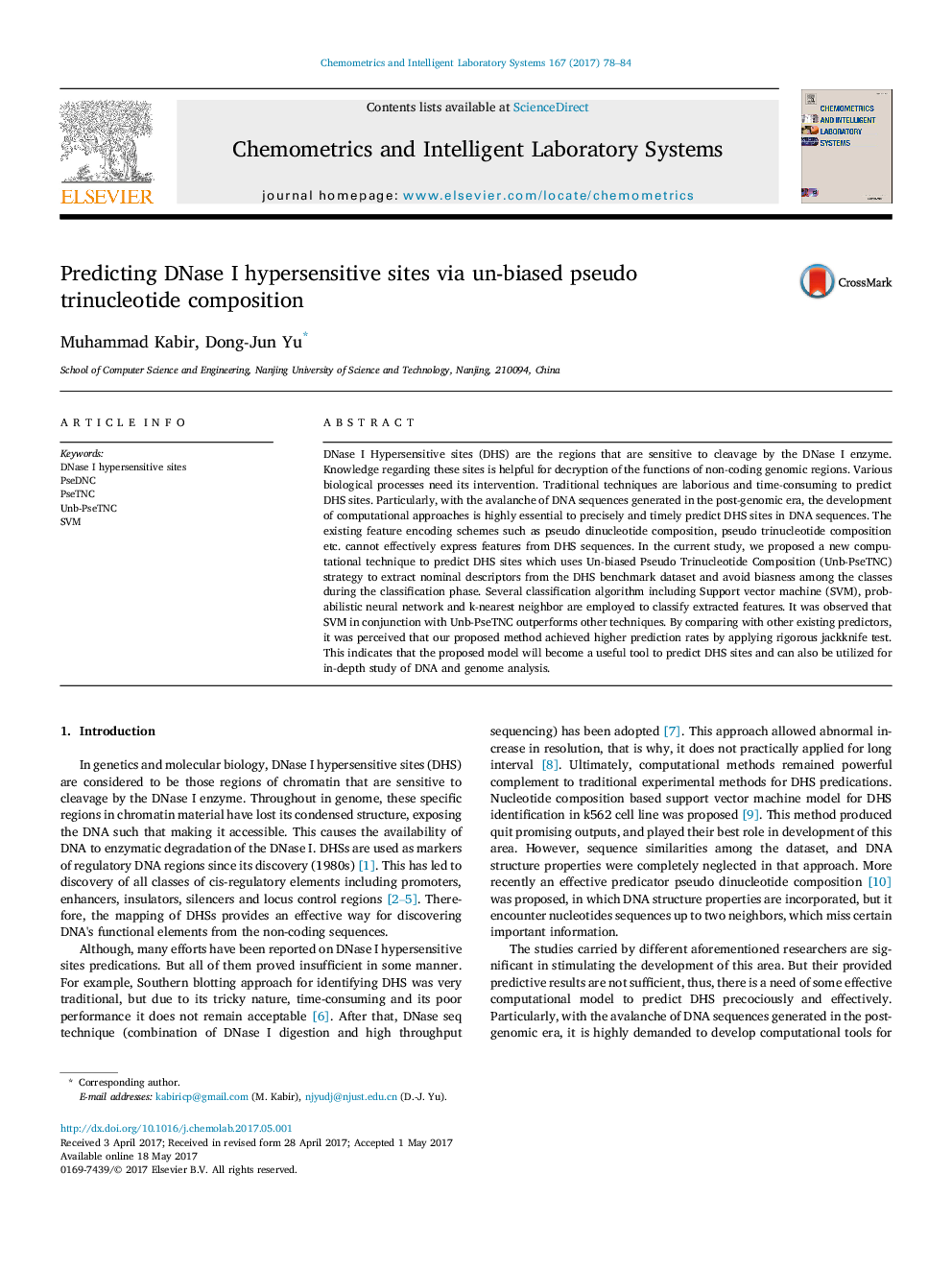| کد مقاله | کد نشریه | سال انتشار | مقاله انگلیسی | نسخه تمام متن |
|---|---|---|---|---|
| 5132174 | 1491512 | 2017 | 7 صفحه PDF | دانلود رایگان |

- A new computational model was established for prediction of DHS sites.
- The method used three nominal feature extraction methods called PseDNC, PseTNC and Un-PseTNC.
- Classification engines like SVM, PNN and KNN were utilized for classification.
- Jackknife cross-validation test was used.
- Proposed method produced improved performance than the state-of-art methods.
DNase I Hypersensitive sites (DHS) are the regions that are sensitive to cleavage by the DNase I enzyme. Knowledge regarding these sites is helpful for decryption of the functions of non-coding genomic regions. Various biological processes need its intervention. Traditional techniques are laborious and time-consuming to predict DHS sites. Particularly, with the avalanche of DNA sequences generated in the post-genomic era, the development of computational approaches is highly essential to precisely and timely predict DHS sites in DNA sequences. The existing feature encoding schemes such as pseudo dinucleotide composition, pseudo trinucleotide composition etc. cannot effectively express features from DHS sequences. In the current study, we proposed a new computational technique to predict DHS sites which uses Un-biased Pseudo Trinucleotide Composition (Unb-PseTNC) strategy to extract nominal descriptors from the DHS benchmark dataset and avoid biasness among the classes during the classification phase. Several classification algorithm including Support vector machine (SVM), probabilistic neural network and k-nearest neighbor are employed to classify extracted features. It was observed that SVM in conjunction with Unb-PseTNC outperforms other techniques. By comparing with other existing predictors, it was perceived that our proposed method achieved higher prediction rates by applying rigorous jackknife test. This indicates that the proposed model will become a useful tool to predict DHS sites and can also be utilized for in-depth study of DNA and genome analysis.
Journal: Chemometrics and Intelligent Laboratory Systems - Volume 167, 15 August 2017, Pages 78-84